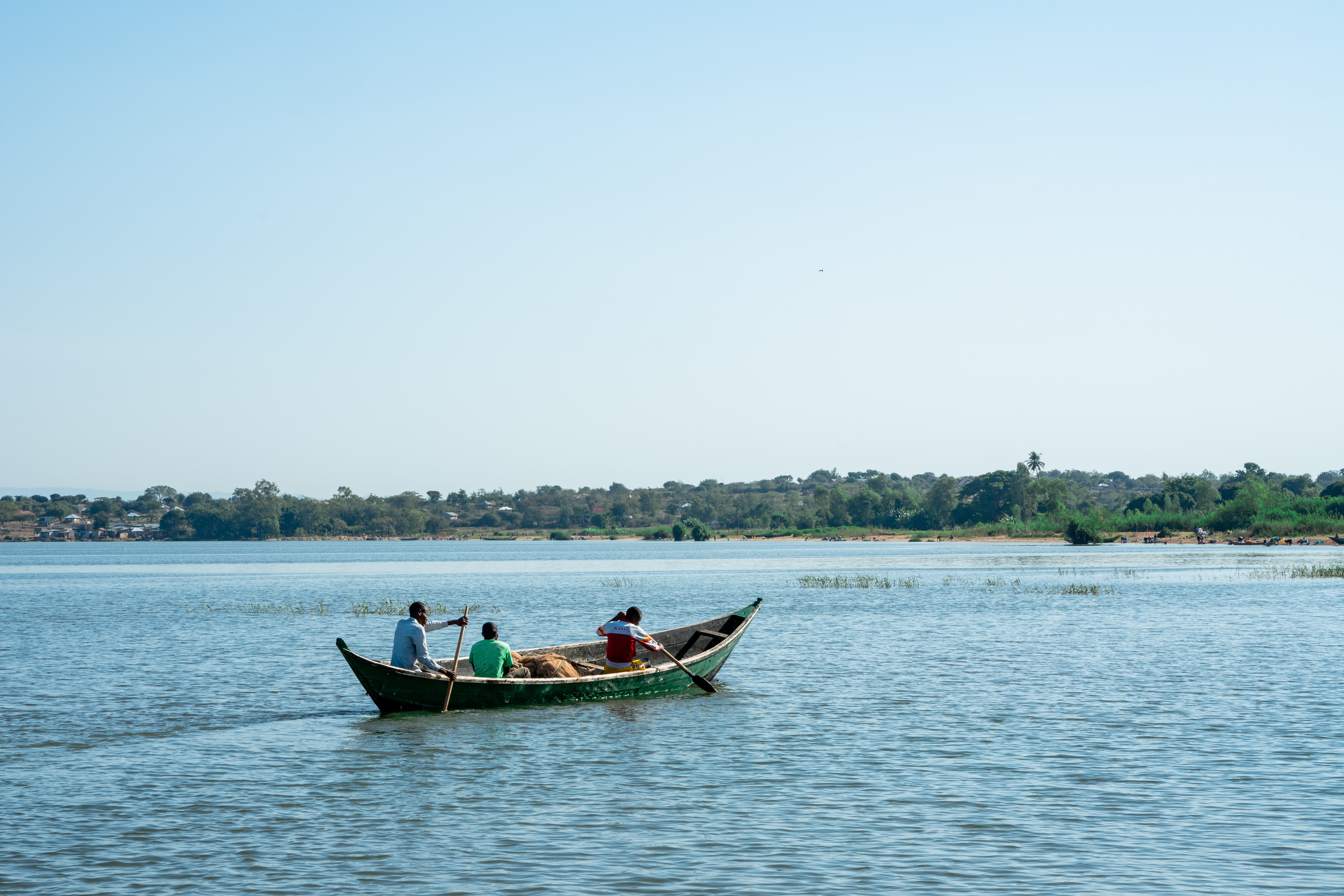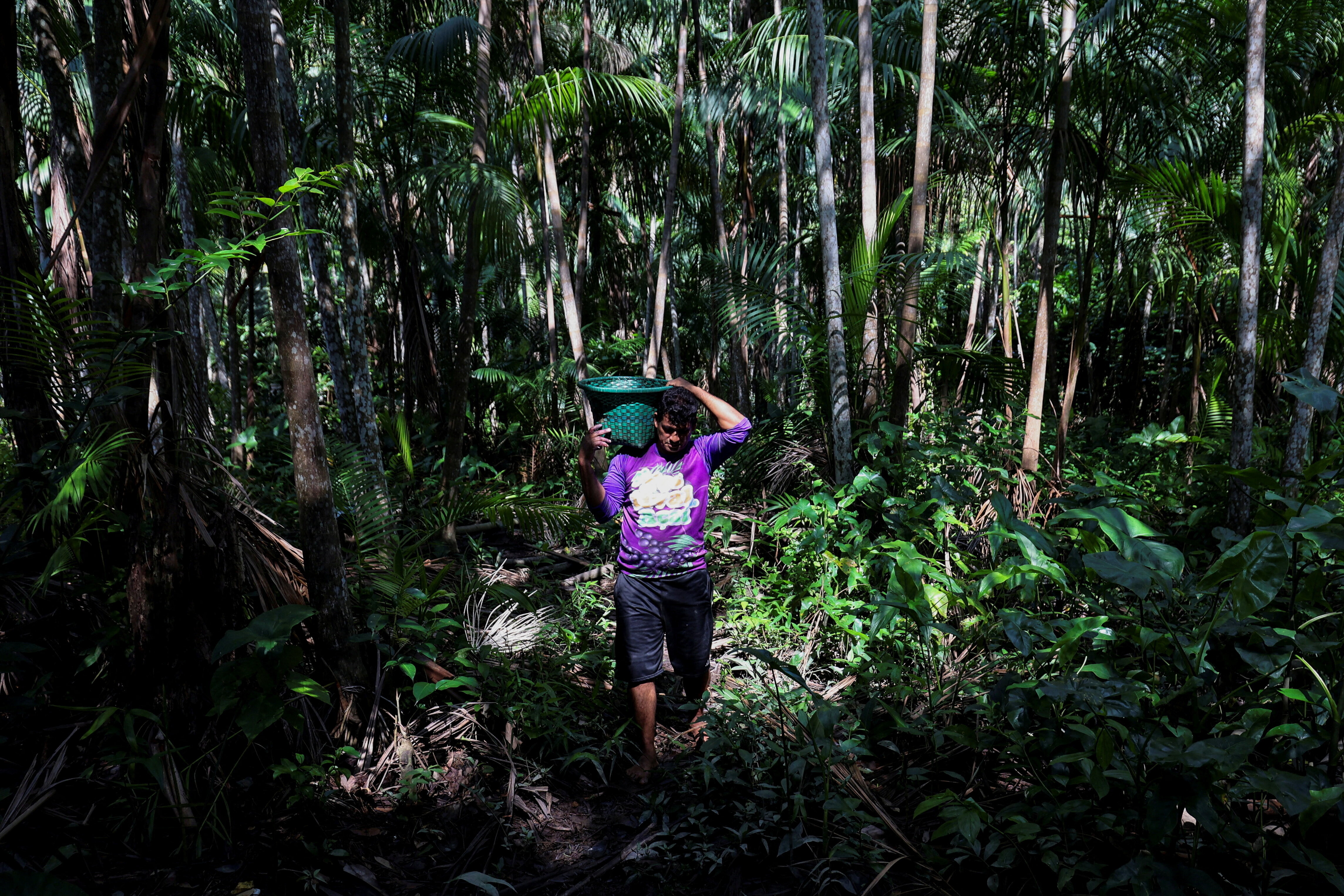Feeding the world without destroying it: this week's Radio Davos COP26 podcast

The latest episode of Radio Davos discusses food security, the role of food in climate change, and how we feed the world sustainably. Image: UNSPLASH/Szabo Viktor
- Agriculture and food production is a major source of greenhouse gas emissions.
- Food production is a complex issue, with some people suffering shortages, while others eat unhealthy amounts of some foods.
- We have created a food system that is over-reliant on a small group of foods, which creates vulnerabilities in the system, say experts.
- In these edited interviews for Radio Davos, two food industry experts discuss the role of food in climate change and how we can eat more sustainably.
When it comes to climate change and greenhouse gas emissions, we often think first of power generation or heavy industry transport.
But food production emits a third of human-made greenhouse gas emissions, through things like land clearance and emissions from cattle. And demand for food will continue to increase as the global population reaches almost 10 billion by 2050.
During COVID-19, undernourishment has increased, with as many as 811 million people facing hunger in 2020, according to the UN’s Food and Agriculture Organization.
In the latest episode of Radio Davos, guests discuss food security, the role of food in climate change, and how we feed the world sustainably.
Dan Saladino, a British food journalist, and author of Eating to Extinction, spoke to Head of Media Content at the World Economic Forum, Amanda Russo, about how we have become reliant on a narrow range of foods, and what this means for our health and the environment.
Russo also spoke to Michael Oshman, CEO of the Green Restaurant Association, about his work helping restaurants reduce their sector’s footprint.
Below are the edited highlights from their conversations.
Listen to the full episode here:
What are the risks around food production?
Dan Saladino: Most of the world's seeds and more than 50% of the world's seed supply and trade is now in the hands of four corporations. One in four is the product of a single brewer, and the list goes on of that process of consolidation. Ask a financial adviser about that idea of putting all your shares into a very small portfolio? It's a risky business.

Saladino: There's a serious problem about this reduction in the genetic diversity of how we produce, supply and distribute food. There’s 7.8 billion of us around the world. We all are from different cultures and communities. Our food and drink over millennia has been a reflection of those cultures and our identities. Does being human mean a future in which more of us are growing and eating the same kind of food?
Whether it was wheat domesticated 10,000 years ago, maize from Mexico 7,000 years ago and rice domesticated in China - the way [foods] spread around the world and every community made it their own, was as creative and as important a part of the human story and the expression of being human as the building of a cathedral or the painting of a picture.
How does food go extinct?
Saladino: The Irish potato famine was a situation in which the same genetically uniform potato was planted in the same fields. That crop became extremely vulnerable to a blight, a fungal disease, and the outcome was a million people died. So these diseases have been a challenge - but the scale of uniformity is new.
That's the key idea behind the Green Revolution. One of the main architects of this post-war move to breed new, high-yielding disease-resistant plants, Norman Borlaug, was awarded the Nobel Prize in recognition of the fact that by creating these new wheats, followed by new varieties of rice, we could feed a lot of people. They were super efficient. But even Norman Borlaug was saying at the time, this is not a long-term solution. More structural things need to change in the food system.
What is the World Economic Forum doing to help ensure global food security?
How do we address food resilience and ensure people have enough food?
Saladino: There are parts of the world with too much food and too much of the wrong type of food. Because of this abundance we created with these Green Revolution crops, we could afford to feed it to animals so that the production of meat increased as well. We've made more changes to human diets in the last 150 years than we have done in the last one million years.
People have different experiences of food security and access to a good diet. Some of this is down to us and the choices we make, the way we influence the food system with what we buy and what we eat. But actually above us and beyond us are very powerful structural forces that shape this system. In my book, I talk about subsidies, and how these powerful economic triggers that governments use to influence production shape imports and exports of food around the world.
This is why events such as the UN Food Systems Summit and COP26 as well are important because you need now to take a holistic approach to food. Even if you go back to the Paris climate agreement, there was very little being discussed there about food. Now it's on the agenda.
What part do restaurants have to play in addressing climate change?
Michael Oshman: When you look at the GDP of all countries, the US restaurant industry would be in the top 20. So the restaurant industry has a huge part to play in terms of solving climate issues. We look at transportation and cars and electrification, but we also have to take a look at this industry that is really consuming about half of the food budget in countries like the United States and Canada.
[But] it is not fair to make restaurateurs experts in what's really biodegradable, which products are greenwashing, which products are real and which ones are right in the middle. It's not a realistic expectation.
What does it mean to be a green certified restaurant?
Oshman: The Certified Green Restaurant is the registered trademark of the Green Restaurant Association. It means they meet standards in various categories including energy, waterways, disposables, chemicals. It means it's transparent and we’ve got all the data that demonstrates that. Most restaurants could do things that actually not only wouldn't be that deleterious to their bottom line, but they'll come out ahead.
How do you reach the massive restaurant industry?
Oshman: Nobody would be working with us unless they thought their employees and consumers, stakeholders, stockholders wanted them to be sustainable. One of the most undervalued things in a capitalist society is the customer self-awareness that they are the voters of that company.
We already have enough data to say you might even be getting better prices - or the restaurant might be making more profit. If a restaurant is recycling and the food's being turned into soil and the paper's being turned to paper, they're getting charged less for their waste to be taken away. Their electricity bill is lower, their water bill is lower. They're spending less money on training their employees because they have higher retention. They have a better group of employees.
Find all our podcasts here.
Subscribe: Radio Davos; Meet the Leader; Agenda Dialogues
Join the World Economic Forum Podcast Club on Facebook.
Don't miss any update on this topic
Create a free account and access your personalized content collection with our latest publications and analyses.
License and Republishing
World Economic Forum articles may be republished in accordance with the Creative Commons Attribution-NonCommercial-NoDerivatives 4.0 International Public License, and in accordance with our Terms of Use.
The views expressed in this article are those of the author alone and not the World Economic Forum.
Stay up to date:
Food Security
Forum Stories newsletter
Bringing you weekly curated insights and analysis on the global issues that matter.








